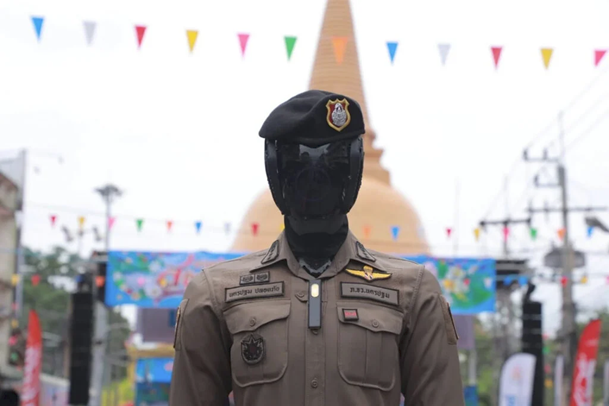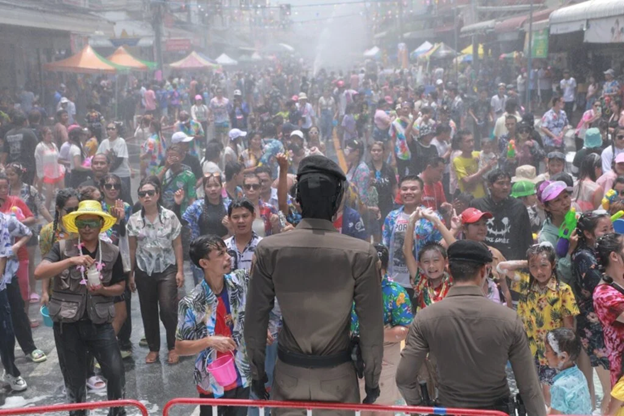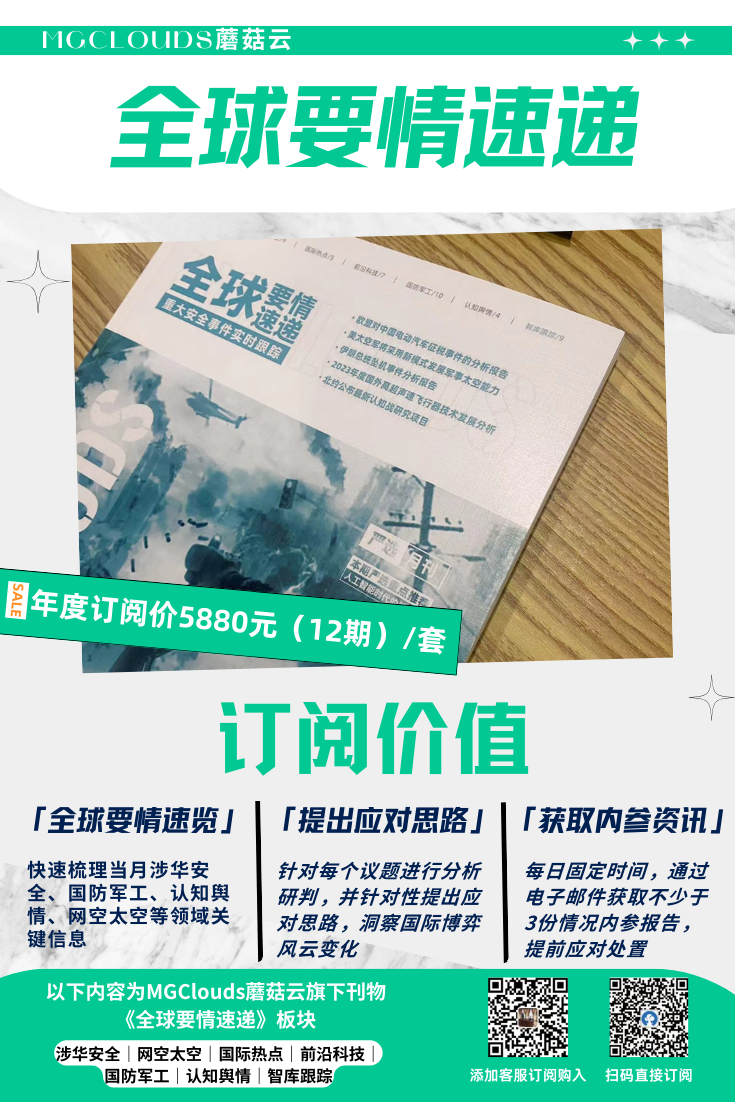
1. Introduction In recent years, the application of artificial intelligence technology in the field of public safety has gradually become a global focus. Thailand, as an important country in Southeast Asia, has recently launched a new police device called “Police AI Robot 1.0,” aimed at enhancing public safety management through high-tech means.This initiative has sparked widespread discussion, with some praising its technological potential while others express concerns about its possible social and political impacts. This article will conduct an in-depth analysis of Thailand’s police AI robot from multiple perspectives, including technical functions, application scenarios, potential risks, and comparisons with similar global cases.
In recent years, the application of artificial intelligence technology in the field of public safety has gradually become a global focus. Thailand, as an important country in Southeast Asia, has recently launched a new police device called “Police AI Robot 1.0,” aimed at enhancing public safety management through high-tech means.This initiative has sparked widespread discussion, with some praising its technological potential while others express concerns about its possible social and political impacts. This article will conduct an in-depth analysis of Thailand’s police AI robot from multiple perspectives, including technical functions, application scenarios, potential risks, and comparisons with similar global cases. 2. Technical Functions and Design Features
2. Technical Functions and Design Features According to information released by the Royal Thai Police on April 16, 2025, on Facebook, the Police AI Robot 1.0 was jointly developed by the Police Headquarters of the Seventh Province, the Police Station of Nakhon Pathom, and the Nakhon Pathom City Government.The robot is dressed in a police uniform and is equipped with a wheeled metal platform, designed to resemble a human police officer. Its core technical functions include accessing nearby CCTV cameras, controlling drones, and featuring a 360-degree AI camera. These cameras possess advanced functions such as facial recognition, behavior analysis, weapon detection, and blacklist alerts.Notably, its video analysis technology can distinguish between water guns and real weapons and identify potential violent behavior. These functions are designed to enhance public safety during large events, compensating for the shortcomings of traditional police resources.However, despite the Thai police’s active promotion of its technical capabilities, there has yet to be any public video or detailed report demonstrating the robot’s actual mobility. Many similar robots perform poorly in complex environments (such as sidewalks or crowded areas), leading to reasonable speculation that the Thai police AI robot may still be in the technical validation stage, with limited independent mobility. This is similar to cases of police robots in other regions, such as New York City’s subway robot, which was abandoned after trial runs due to unsatisfactory performance.
According to information released by the Royal Thai Police on April 16, 2025, on Facebook, the Police AI Robot 1.0 was jointly developed by the Police Headquarters of the Seventh Province, the Police Station of Nakhon Pathom, and the Nakhon Pathom City Government.The robot is dressed in a police uniform and is equipped with a wheeled metal platform, designed to resemble a human police officer. Its core technical functions include accessing nearby CCTV cameras, controlling drones, and featuring a 360-degree AI camera. These cameras possess advanced functions such as facial recognition, behavior analysis, weapon detection, and blacklist alerts.Notably, its video analysis technology can distinguish between water guns and real weapons and identify potential violent behavior. These functions are designed to enhance public safety during large events, compensating for the shortcomings of traditional police resources.However, despite the Thai police’s active promotion of its technical capabilities, there has yet to be any public video or detailed report demonstrating the robot’s actual mobility. Many similar robots perform poorly in complex environments (such as sidewalks or crowded areas), leading to reasonable speculation that the Thai police AI robot may still be in the technical validation stage, with limited independent mobility. This is similar to cases of police robots in other regions, such as New York City’s subway robot, which was abandoned after trial runs due to unsatisfactory performance. 3. Application Scenarios and Public Safety Goals
3. Application Scenarios and Public Safety Goals The Thai police stated that the primary application scenario for the Police AI Robot 1.0 is the security management of large public events. For example, during the upcoming New Year celebrations, the robot will be deployed on Tonson Road in the Muang District of Nakhon Pathom, connected to the command control center for efficient event monitoring. A police spokesperson emphasized that the robot can work “tirelessly” and serves as a “force multiplier,” providing additional support in situations where police resources are stretched thin. On the surface, the introduction of this technology does indeed help enhance public safety, especially in preventing crime and violent incidents in crowded situations.However, the public remains skeptical about the robot’s actual role.On one hand, its powerful surveillance capabilities raise privacy concerns; on the other hand, the Thai police’s past record of violence against activists has led people to question whether this technology will be used to suppress dissent.For instance, Bloomberg reported on April 16 that Thai security agencies had previously conducted doxxing against democratic activists. In this context, the deployment of police AI robots is inevitably interpreted as a potential surveillance tool rather than merely a public safety device.4. Potential Risks and Social Impact
The Thai police stated that the primary application scenario for the Police AI Robot 1.0 is the security management of large public events. For example, during the upcoming New Year celebrations, the robot will be deployed on Tonson Road in the Muang District of Nakhon Pathom, connected to the command control center for efficient event monitoring. A police spokesperson emphasized that the robot can work “tirelessly” and serves as a “force multiplier,” providing additional support in situations where police resources are stretched thin. On the surface, the introduction of this technology does indeed help enhance public safety, especially in preventing crime and violent incidents in crowded situations.However, the public remains skeptical about the robot’s actual role.On one hand, its powerful surveillance capabilities raise privacy concerns; on the other hand, the Thai police’s past record of violence against activists has led people to question whether this technology will be used to suppress dissent.For instance, Bloomberg reported on April 16 that Thai security agencies had previously conducted doxxing against democratic activists. In this context, the deployment of police AI robots is inevitably interpreted as a potential surveillance tool rather than merely a public safety device.4. Potential Risks and Social Impact The introduction of police AI robots may bring various social and political impacts. Firstly, while their facial recognition and behavior analysis functions can aid in crime prevention, they may also infringe on citizens’ privacy rights. In the absence of a clear legal framework, the risk of misuse of such surveillance technology cannot be ignored. Secondly, the deployment of robots may exacerbate public distrust in the government, especially in a politically complex country like Thailand. If the robots are used against specific groups or activists, the negative impact will far exceed the value of the technology itself.Moreover, from a technological maturity perspective, global cases of police robots indicate that such devices often face numerous challenges in practical applications. For example, a police robot in California was criticized for failing to respond to citizens’ calls for help; New York City’s subway robot was abandoned after trial runs due to insufficient functionality. Whether the Thai police AI robot can avoid similar issues remains to be seen. Currently, its dystopian potential has not fully manifested, but the imperfection of the technology may lead to failures at critical moments, thereby increasing public safety risks.5. Global Case Comparisons and Lessons Learned
The introduction of police AI robots may bring various social and political impacts. Firstly, while their facial recognition and behavior analysis functions can aid in crime prevention, they may also infringe on citizens’ privacy rights. In the absence of a clear legal framework, the risk of misuse of such surveillance technology cannot be ignored. Secondly, the deployment of robots may exacerbate public distrust in the government, especially in a politically complex country like Thailand. If the robots are used against specific groups or activists, the negative impact will far exceed the value of the technology itself.Moreover, from a technological maturity perspective, global cases of police robots indicate that such devices often face numerous challenges in practical applications. For example, a police robot in California was criticized for failing to respond to citizens’ calls for help; New York City’s subway robot was abandoned after trial runs due to insufficient functionality. Whether the Thai police AI robot can avoid similar issues remains to be seen. Currently, its dystopian potential has not fully manifested, but the imperfection of the technology may lead to failures at critical moments, thereby increasing public safety risks.5. Global Case Comparisons and Lessons Learned The Thai police AI robot is not the first of its kind globally; other countries’ attempts in the field of police robots provide valuable lessons. For instance, in the United States, New York City once deployed robots in its subway system, attempting to enhance safety through monitoring and patrolling, but ultimately terminated the project due to limited robot functionality and high costs. A police robot in California was criticized for failing to effectively handle citizens’ calls for help. These cases indicate that the success of police robots relies not only on technological advancement but also on matching actual needs and operating within legal and ethical frameworks.In contrast, Dubai has achieved some success in the application of police robots. Its robot police can interact with citizens, provide basic services, and alleviate police pressure to some extent. Dubai’s experience shows that clear functional positioning and public acceptance are key to the successful implementation of technology. Thailand can learn from these experiences to avoid repeating the failures of other countries while ensuring transparency and public participation in technology deployment.6. Technical Limitations and Future Development
The Thai police AI robot is not the first of its kind globally; other countries’ attempts in the field of police robots provide valuable lessons. For instance, in the United States, New York City once deployed robots in its subway system, attempting to enhance safety through monitoring and patrolling, but ultimately terminated the project due to limited robot functionality and high costs. A police robot in California was criticized for failing to effectively handle citizens’ calls for help. These cases indicate that the success of police robots relies not only on technological advancement but also on matching actual needs and operating within legal and ethical frameworks.In contrast, Dubai has achieved some success in the application of police robots. Its robot police can interact with citizens, provide basic services, and alleviate police pressure to some extent. Dubai’s experience shows that clear functional positioning and public acceptance are key to the successful implementation of technology. Thailand can learn from these experiences to avoid repeating the failures of other countries while ensuring transparency and public participation in technology deployment.6. Technical Limitations and Future Development Despite being marketed as a groundbreaking technology, the actual capabilities of the Thai police AI robot still have significant limitations. Currently, there is no evidence that the robot can move independently or handle tasks in complex environments. Many similar robots perform poorly when faced with obstacles or irregular terrain, which may be one reason why the Thai robot has not publicly demonstrated its mobility. Additionally, the accuracy of AI technology in behavior analysis and weapon detection still needs further validation, especially in high-pressure or high-risk real-time scenarios.In the future, if Thailand wishes to fully leverage the potential of police AI robots, it must advance in three areas: technological research and development, legal regulations, and public communication. Technologically, priority should be given to solving the robot’s mobility and environmental adaptability; legally, clear regulations on the use of surveillance technology must be established to prevent misuse; and in terms of public communication, transparency should be enhanced to gain understanding and support from all sectors of society. Only under multiple safeguards can police AI robots truly become a force for public safety rather than a focal point of social controversy.7. Conclusion
Despite being marketed as a groundbreaking technology, the actual capabilities of the Thai police AI robot still have significant limitations. Currently, there is no evidence that the robot can move independently or handle tasks in complex environments. Many similar robots perform poorly when faced with obstacles or irregular terrain, which may be one reason why the Thai robot has not publicly demonstrated its mobility. Additionally, the accuracy of AI technology in behavior analysis and weapon detection still needs further validation, especially in high-pressure or high-risk real-time scenarios.In the future, if Thailand wishes to fully leverage the potential of police AI robots, it must advance in three areas: technological research and development, legal regulations, and public communication. Technologically, priority should be given to solving the robot’s mobility and environmental adaptability; legally, clear regulations on the use of surveillance technology must be established to prevent misuse; and in terms of public communication, transparency should be enhanced to gain understanding and support from all sectors of society. Only under multiple safeguards can police AI robots truly become a force for public safety rather than a focal point of social controversy.7. Conclusion The launch of Thailand’s Police AI Robot 1.0 marks a new attempt at applying artificial intelligence technology in the field of public safety, with certain innovative technical functions and application scenarios. However, its potential social and political impacts, technical limitations, and lessons learned from similar global cases indicate that this technology must be approached with caution. In future developments, Thailand needs to balance technological innovation with ethical and legal constraints, ensuring that police AI robots can genuinely serve public safety rather than becoming tools for surveillance or repression. For other countries globally, Thailand’s practices also provide important references and insights for the application of police robots.Source:https://gizmodo.com/thailand-rings-in-new-year-with-drone-and-cctv-powered-robot-cop-2000592093
The launch of Thailand’s Police AI Robot 1.0 marks a new attempt at applying artificial intelligence technology in the field of public safety, with certain innovative technical functions and application scenarios. However, its potential social and political impacts, technical limitations, and lessons learned from similar global cases indicate that this technology must be approached with caution. In future developments, Thailand needs to balance technological innovation with ethical and legal constraints, ensuring that police AI robots can genuinely serve public safety rather than becoming tools for surveillance or repression. For other countries globally, Thailand’s practices also provide important references and insights for the application of police robots.Source:https://gizmodo.com/thailand-rings-in-new-year-with-drone-and-cctv-powered-robot-cop-2000592093


Recommended Reading

Long-term Vision: Summary of Work in 2024 and New Year Greetings from Mushroom Cloud

XorDDoS Malware Targets the U.S. for Global Botnet Expansion: Impact on Our Cybersecurity and Response Strategies

Trump’s Shipbuilding Plan: Can the U.S. Reshape Maritime Hegemony or Fall into a Deeper Predicament?